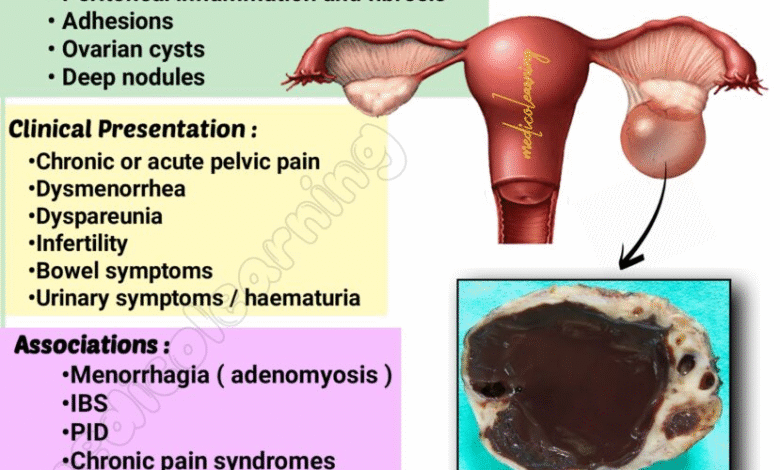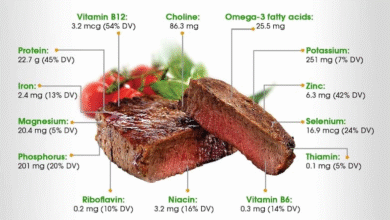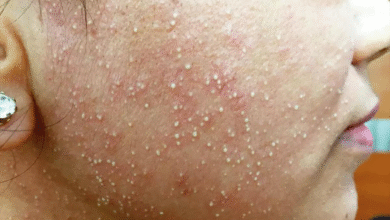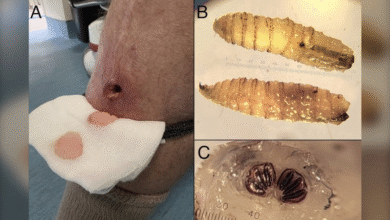Chocolate Cyst: Understanding Bindi Irwin’s Health Battle

A chocolate cyst, also known as an endometrioma, is a term that refers to a type of cyst formed from endometrial tissue that grows outside the uterus, often affecting those with endometriosis. Recently, wildlife conservationist Bindi Irwin opened up about her battle with this painful condition, highlighting the physical and emotional toll it has taken over thirteen years. Chocolate cysts are not just benign growths; they can manifest severe symptoms such as debilitating cramps and discomfort during intercourse, and if left untreated, they may lead to complications like infertility. Understanding the symptoms of endometriomas, such as pain during menstruation and irregular cycles, is essential for early diagnosis and proper treatment. Awareness of the causes and available treatment options for chocolate cysts, including surgical removal and hormonal therapy, can greatly aid those suffering from this challenging condition.
Chocolate cysts are often associated with a common yet complex condition known as endometriosis, characterized by the presence of tissue similar to the uterine lining in locations outside the uterus. Often referred to as endometriomas, these growths can be painful and disruptive, mirroring the symptoms of severe endometriosis. Recognizing the signs of these cysts, such as extreme menstrual discomfort and pelvic pain, is critical for timely intervention and management. Treatment options for endometriomas vary, including laparoscopic surgery for cyst removal, which can alleviate the distressing symptoms and improve quality of life. Thorough understanding and proactive treatment of ovarian endometriomas can significantly lessen their impact on those affected, allowing for better health outcomes.
Understanding Chocolate Cysts: What Are They?
A chocolate cyst, medically known as an endometrioma, is an abnormal growth filled with a dark, chocolate-like fluid that forms on the ovaries due to endometriosis. During endometriosis, tissue similar to the lining of the uterus grows outside it, and when this tissue attaches to the ovaries, it can lead to the development of endometriomas. These cysts not only symbolize a severe manifestation of endometriosis but also serve as a clear indicator of how deeply this condition can affect one’s reproductive health and overall well-being.
Endometriomas can be quite elusive, as symptoms may range from mild discomfort to severe pain during menstrual cycles or intercourse. Those who suffer from endometriosis might experience more than just physical pain; emotional turmoil often accompanies the struggle. With Bindi Irwin’s recent revelation about her battles with this condition, it has shed light on the need for greater awareness of endometriomas and their impact on the lives of many.
Common Symptoms and Challenges of Endometriomas
The symptoms associated with chocolate cysts or endometriomas vary widely. Many individuals experience debilitating cramps during their menstrual cycle, pelvic pain, and pain during intercourse, which can significantly affect their quality of life and mental health. Additionally, they may encounter gastrointestinal disturbances such as nausea, vomiting, and bloating. Recognizing these symptoms is crucial for timely diagnosis and treatment, especially since endometriosis can lead to infertility issues.
Another common challenge is the potential for endometriomas to recur after surgical removal. According to studies, rates of recurrence can be as high as 25%. This reality can be disheartening for those who actively seek relief, emphasizing the importance of continuous monitoring even after treatment. Individuals need to be aware of their options and decide with healthcare professionals how to best manage their condition.
Causes and Risk Factors of Chocolate Cysts
Despite extensive research, the exact cause of chocolate cysts remains elusive. One prominent theory suggests that retrograde menstruation, where menstrual blood flows back into the pelvis instead of leaving the body, may lead to the formation of endometriomas. This theory explains how uterine cells could attach to the ovaries and form cysts. Other factors, such as hormonal imbalance and genetic predisposition, may also play a role in the development of these cysts.
Identifying risk factors for endometriomas is important for prevention and awareness. Those with a family history of endometriosis are at a higher risk, as are individuals who experience early onset of menstruation or have longer menstrual cycles. Although chocolate cysts impact a significant number of individuals, understanding the contributing factors can help in better management and early detection.
Diagnosis: How Are Chocolate Cysts Identified?
The diagnosis of chocolate cysts often begins with a thorough physical examination and a detailed discussion of symptoms. Healthcare professionals may employ imaging techniques such as ultrasounds or MRIs to visualize the ovaries and identify any cysts present. During these evaluations, doctors look for specific characteristics of endometriomas, such as their size and the appearance of the fluid within them.
In certain instances, larger cysts may be detectable during a pelvic exam. However, if the diagnosis remains uncertain, a laparoscopy can be performed, allowing for direct observation and tissue sampling. This surgical method not only helps confirm the presence of chocolate cysts but also addresses any immediate concerns, making it an essential part of the diagnostic process.
Treatment Options for Chocolate Cysts
The management of chocolate cysts primarily revolves around alleviating symptoms and preventing further complications, especially for those wishing to conceive. Treatments may include hormonal therapies that help regulate menstruation and reduce the severity of symptoms. These treatments are designed to manage the hormonal environment within the body, potentially leading to a reduction in cyst size and symptom severity.
Surgical options are also available, particularly for larger or symptomatic cysts. Doctors may recommend laparoscopic surgery to remove endometriomas, which may lead to relief from pain and discomfort. However, patients must be informed that there is still a possibility for endometriomas to reappear, and regular monitoring is necessary after treatment. Ultimately, a tailored treatment plan, developed in collaboration with a healthcare provider, is essential for optimal management of chocolate cysts.
Bindi Irwin’s Journey with Endometriosis
Bindi Irwin has publicly shared her battle with endometriosis, highlighting her experience with chocolate cysts and the long road to diagnosis and treatment. Her story resonates with many, as it illustrates the struggles faced by those living with similar health conditions. Following her decision to undergo surgery to remove multiple endometriosis lesions and a chocolate cyst, she has raised awareness about the importance of speaking openly on women’s health issues.
Through her advocacy, Irwin aims to educate others about the signs and symptoms of endometriosis and the need for proper diagnosis and treatment options. Her journey not only uplifts those battling the same condition but also emphasizes the crucial role that community and awareness play in health-related issues. By sharing her experiences, Bindi hopes to inspire more individuals to seek help and take action regarding their reproductive health.
Living with Endometriosis: A Personal Perspective
Living with endometriosis and chocolate cysts can be an emotional and physical rollercoaster. Symptoms can disrupt daily life, affecting work, relationships, and personal well-being. Many individuals, like Bindi Irwin, express feelings of isolation and struggle with the impact of their condition. Finding a support network, whether through online communities or local support groups, can be beneficial in navigating these challenges.
Additionally, lifestyle modifications can play a significant role in managing symptoms of endometriosis. Many patients find relief through dietary changes, exercise, and stress management techniques such as yoga or therapy. Maintaining open communication with healthcare providers about symptoms and treatment options is essential to find the most effective management strategies tailored to the individual’s needs.
The Importance of Awareness and Education Around Endometriomas
Increasing awareness surrounding chocolate cysts and endometriosis is vital in creating a more informed community. Education on the symptoms can lead to earlier diagnosis and treatment, which may help alleviate long-term effects such as infertility. Campaigns advocating for women’s health contribute significantly by creating a platform for individuals to discuss their experiences and encourage those suffering to seek medical attention sooner rather than later.
Finally, efforts to disseminate information about endometriomas can empower individuals affected by the condition. Understanding one’s body and advocating for necessary testing and treatment can transform the experience of living with endometriosis. The personal stories of public figures like Bindi Irwin help normalize these conversations, ultimately fostering a more supportive and educated environment for those affected by such conditions.
Potential Future Research on Chocolate Cysts
As our understanding of endometriosis evolves, future research will likely play a crucial role in uncovering the underlying causes and developing innovative treatments for chocolate cysts. Improvements in diagnostic techniques and hormonal therapies could lead to better management options for those affected. Additionally, understanding the genetic factors contributing to endometriosis and its forms may help in predicting and possibly preventing the condition.
Collaboration between researchers, healthcare providers, and those living with endometriosis is essential in driving this progress. Funded studies investigating various aspects of endometriosis and its effects can contribute to a greater body of knowledge, leading to improved patient outcomes. With so many individuals affected by the condition, a collective effort toward research and treatment can inspire hope for better management and potentially a cure in the future.
Frequently Asked Questions
What is a chocolate cyst and how does it relate to endometriosis?
A chocolate cyst, also known as an endometrioma, is a type of ovarian cyst that forms due to endometriosis. It occurs when tissue similar to the lining of the uterus grows on the ovaries and fills with dark, reddish-brown fluid, resembling melted chocolate. This condition can lead to painful symptoms and affect fertility.
What are the common symptoms of a chocolate cyst?
Common symptoms of a chocolate cyst include painful menstrual cramps, pain during intercourse, back pain, nausea, bloating, and changes in urination patterns. These symptoms stem from the endometriosis associated with the cyst, which can impact overall pelvic health.
What are the possible causes of chocolate cysts?
While the exact causes of chocolate cysts are not fully understood, one theory suggests that retrograde menstruation—where menstrual tissue flows backward through the fallopian tubes into the pelvic cavity—may contribute to their development. Other risk factors include having a family history of endometriosis.
How are chocolate cysts diagnosed?
Chocolate cysts are diagnosed through a combination of physical exams and imaging tests like ultrasounds or MRIs. In some cases, doctors may confirm the diagnosis through a laparoscopy, a minor surgical procedure to visualize and possibly remove a sample of the cyst.
What is the treatment for chocolate cysts?
Treatment for chocolate cysts varies based on symptoms and size. Options include monitoring small cysts, surgical removal of larger cysts, and hormonal medications to manage symptoms. Since chocolate cysts can recur, ongoing management and consultation with a healthcare provider are essential.
Can chocolate cysts affect fertility?
Yes, chocolate cysts can affect fertility. The presence of endometriomas may impair ovarian function, making it more challenging to conceive. If you are experiencing fertility issues and have chocolate cysts, consulting with a fertility specialist may be beneficial.
What should Bindi Irwin’s experience with chocolate cysts teach us?
Bindi Irwin’s journey highlights the importance of awareness regarding endometriosis and chocolate cysts. It emphasizes the need for early diagnosis, proper management of symptoms, and the significance of supportive healthcare for those affected by this condition.
Are there lifestyle changes that can help manage chocolate cyst symptoms?
Certain lifestyle changes, such as regular exercise, a balanced diet rich in anti-inflammatory foods, and stress management techniques, may help alleviate some symptoms associated with chocolate cysts. Each individual’s experience may vary, so it’s essential to consult with a healthcare provider for personalized advice.
| Key Point | Details |
|---|---|
| Definition of Chocolate Cyst | A chocolate cyst is an endometrioma, a type of cyst that forms on the ovaries when endometrial tissue grows outside the uterus. |
| Symptoms | Common symptoms include painful periods, pelvic pain, pain during intercourse, back pain, nausea, and bloating. |
| Prevalence | Endometriomas affect about 17% to 44% of people with endometriosis. |
| Diagnosis | Diagnosis can be made through physical exams, MRIs, and ultrasounds. |
| Treatment Options | Treatment may involve monitoring, medication, or surgery, depending on the size and severity of the cyst. |
Summary
A chocolate cyst is an endometriotic cyst that forms on the ovaries, caused by endometrial tissue growing inappropriately. This condition can lead to considerable discomfort and fertility issues for those affected. Although treatment options such as surgery and medication exist, chocolate cysts can recur, making ongoing management crucial for those diagnosed with endometriosis.




